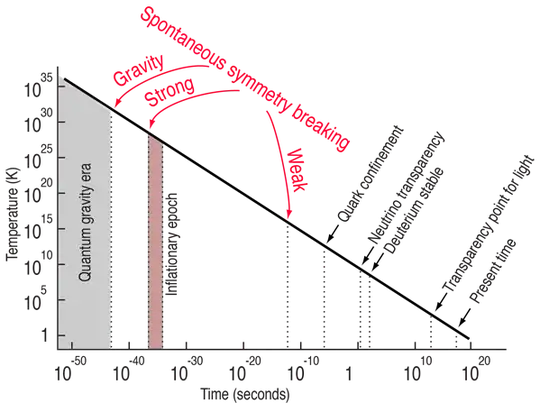in the epochs of the very early universe, the different forces separated from each other in succession. if this is true then at one point there was an electroweak force. and before that, there was the electronuclear force, and before that all four were unified.
my question is about what order the different particles of the standard model came into existence. but the question is in light of the unified nature of the forces.
how did the electroweak force behave before it split? where were w-bosons and photons at this time? where were the leptons? if the forces were "unified," were the particles unified as well? was there a boson that mediated the electroweak interaction? a boson that no longer exists?
and likewise, was there another boson that mediated the electronuclear force when the strong force was still unified with the electroweak?
i have a very rudimentary understanding, but my current framework has me thinking along these lines.
the higgs boson would had to have come first, in order for anything else to even occupy spacetime. then some sort of 4-force boson and 4-way unified fermions? then gravitons split off, leaving a 3-force boson. then the gluons split,leaving a two-force boson and quarks and leptons. and finally the w-bosons and photons separated, allowing for all the elementary and composite particles we have now.
how far off am i?
do we know what particles came in what order and during which epochs?
